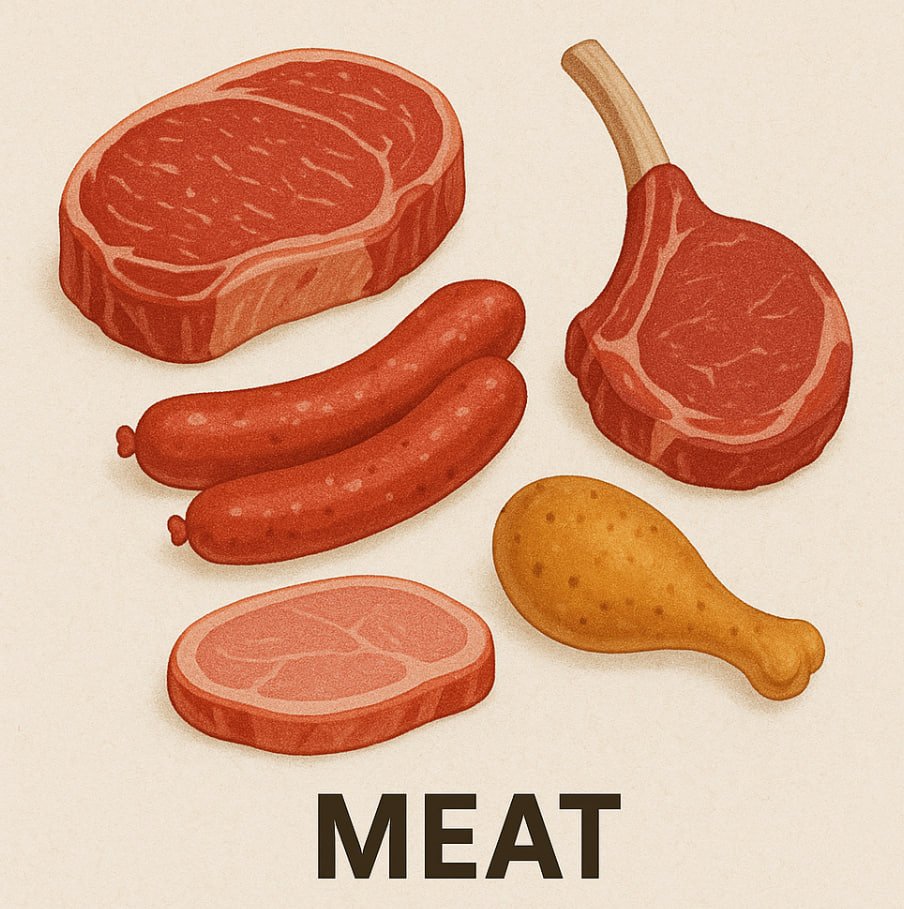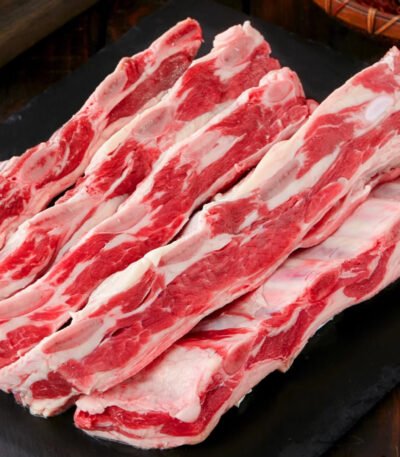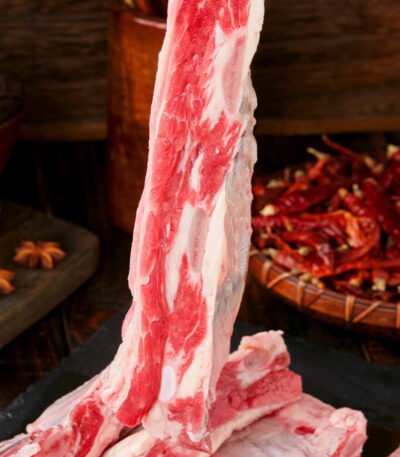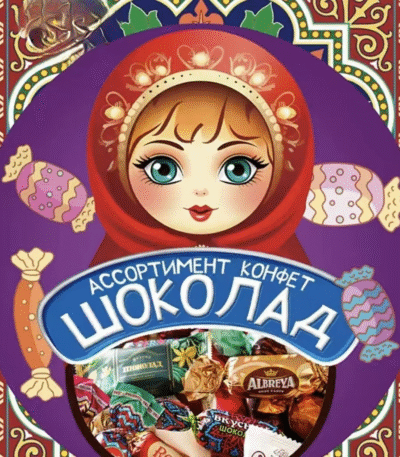Showing 13–18 of 19 results
New Zealand Red Pear
-
Texture & Taste: Crisp, juicy, and naturally sweet 😋
-
Weight: 12 pears/box, 1500g 📦
Shelf Life: Up to several weeks when refrigerated at 1–2°C ❄️
Origin: 🇳🇿 New Zealand – Grown in fertile soil, kissed by pure water and sunshine, ensuring vibrant color & rich flavor
Packaging: Sealed for peak freshness 🛡️ -
– 🌱 100% Natural | No Additives | SGS Tested
-
– ✅ GlobalG.A.P. & HACCP Certified
-
– 🚫 No Preservatives | Non-GMO
-
💰 Handpicked at peak ripeness for premium quality at a great price
-
🍽️ Enjoy fresh, in salads, or as a natural sweetener in recipes! 😋
-
Certifications & Safety:
-
📜 ISO 22000 FSMS Certified (Cert ID: 9165-4652)
-
🔍 Certification Verification Available
-
🛡️ Customs Code: NZ20250220PE (Issued: 2025-04-19)
-
🇲🇾 Malaysia Import License: MLA-2025-PE-1687 – Approved by the Malaysian Food Safety Authority🛡️
Premium Inner Mongolia Lamb Chops – 2.5KG for Just RM19.80! Tender, Juicy & Limited Stock!
- Tender, juicy, and full of natural lamb flavor, each bite offers a delicate, melt-in-your-mouth experience. The meat is rich, succulent, and perfectly balanced, with just the right amount of fat for a smooth texture. 🐑
Weight: Each pack contains 2.5kg of premium Inner Mongolia lamb chops! 📦 - Shelf Life: Up to 6 months when frozen at -18°C or below ❄️
Origin: 🇨🇳 Inner Mongolia – Pasture-raised, ensuring exceptional quality and flavor.
Packaging: Cold chain delivery ensures freshness and hygiene with constant low temperatures. 🛡️ - – 🌱 100% Natural | No Additives | SGS Tested
- – ✅ HACCP & ISO 22000 Certified – Ensuring the highest standards in food safety and quality
- – 🚫 No Preservatives | Non-GMO
- 💰 Handpicked and hand-cut for unbeatable quality and price
- 🍽️ Perfect for grilling, roasting, or slow cooking to create tender, flavourful dishes at home! 😋
- Certifications & Safety:
- 📜 ISO 22000 FSMS Certified (Cert ID: CN2024-IML-8839) – Guaranteeing a robust food safety management system
- 🔍 Certification Verification Available
- 🛡️ Customs Code: CN20250220BF (Issued: 2025-04-03)
- 🇲🇾 Malaysia Import License: AVS-2025-BF-2210 – Approved by the Malaysia Food Agency for meat safety and quality
- 🥩 Meat Safety Assurance: Compliant with Malaysia’s meat import regulations, ensuring safe and hygienic handling from farm to table.

- 📌 Halal Slaughter (Zabiha): By Muslim slaughterers, following Shariah standards, ensuring no cross-contamination from non-Halal foods throughout the entire process.
- 📦 Halal Packaging & Transportation: Vacuum-sealed, frozen at -18°C, stored in Halal-certified warehouses with cold-chain logistics, adhering to JAKIM standards.
Pure Organic Jasmine Tea | Stress Relief & Calming | 20 Individually Wrapped Cups
- Tea Type: Jasmine Tea
Taste: Fresh Aroma
Net Weight: 40g
Net Weight per Cup: 2g
Shelf Life: 18 months
Origin: Fujian Jasmine Tea PDO Region
Packing: Individually sealed nitrogen-flushed bags - -🌱 100% Organic Certified (Control Union CU-88323816)
- -🚫 Zero Additives | SGS Test Report Available
- -💰 Compared to TWG: 62% cheaper with equivalent quality
- Harvest Date: Fall 2024
Oxidation Level: <0.5%
🍵 Embrace Spring’s First Fragrance - Certifications & Safety:
- 📜 ISO 22000 FSMS Certified (Cert ID: 7284-3962)
- 🔍 Verify Certification
- 🛡️ Customs Release Code: MY20241119TE (Issued: 2025-02-26)
- 🇲🇾 Malaysia Approved Import License: MLA-2025-TE-1458 – Approved by the Malaysian Food Safety Authority🛡️
RM19 • 2.5KG Inner Mongolia Lamb Ribs – Bone-In, Rich & Juicy 🐑
- Original-cut lamb ribs from Inner Mongolia – rich, juicy, and full of character.
- Ideal for roasting, BBQ, or slow-cooking – flavourful with minimal seasoning. 🐑
- Weight: 2.5KG per pack – trimmed original-cut lamb ribs, portioned for easy cooking 📦
- Shelf Life: Up to 12 months when frozen at -18°C ❄️
- Origin: Inner Mongolia 🇨🇳 – pasture-raised lamb, slaughtered and packed at source
- Packaging: Vacuum-sealed & cold-chain delivered – ensures freshness and hygiene 🧊
- – 🧪 DVS Certified (Malaysia Department of Veterinary Services)
- – ✅ FSQD Approved (Food Safety & Quality Division)
- – 🛡️ MAQIS-Cleared (Quarantine & Inspection)
- – 🕌 Halal-Compliant – slaughtered according to Islamic rites
- 💰 RM11.20 cheaper per KG than regular price – unmatched value
- 🍽️ Perfect for BBQ, dry-roast, or rich herbal soups
- Certifications & Safety
- 📜 HACCP Certificate ID: MY-FSQD-2025-ILR1022 – Verified under Malaysia’s national food safety scheme
- 🔍 Inspection & Halal verification available on request
- 🛡️ Customs Entry Code: CN20250422ILR – Cleared by MAQIS on 2025-04-22
- 🇲🇾 Import License: AVS-2025-ILR-4481
- 📑 Fully compliant with Malaysian veterinary, quarantine & Halal import standards

- 📌 Halal Slaughter (Zabiha): By Muslim slaughterers, following Shariah standards, ensuring no cross-contamination from non-Halal foods throughout the entire process.
- 📦 Halal Packaging & Transportation: Vacuum-sealed, frozen at -18°C, stored in Halal-certified warehouses with cold-chain logistics, adhering to JAKIM standards.
RM24.70 • Raw-Cut Young Lamb Leg 3KG Bag (Inner Mongolia) • Includes Signature Dip 🐑
- Raw-cut young lamb leg from Inner Mongolia – naturally tender, with no seasoning or additives. Ideal for Malaysian-style cooking like kari, sup berempah or stir-fry. 🐑
- Weight: 3KG per bag (Raw-cut young lamb leg, no marinade) 📦
- Shelf Life: Up to 12 months when frozen at -18°C or below ❄️
- Origin: 🇨🇳 Inner Mongolia, China – Pasture-raised lamb, clean-trimmed for freshness and quality
- Packaging: Vacuum-sealed & cold-chain delivered to maintain hygiene and texture 🧊
- – 🧪 100% Natural | No Additives | Tested by Malaysia DVS
- – ✅ FSQD Certified (Food Safety & Quality Division, Ministry of Health Malaysia)
- – 🛡️ MAQIS-Cleared | JAKIM Halal Certified | Monitored under MOH Malaysia
- – 🕌 Halal-Compliant – slaughtered and processed according to Shariah guidelines
- 💰 Over RM13 saved per KG – high value, no compromise
- 🍽️ Bonus: 2 sachets of our signature spicy dipping sauce per bag – bold, savoury and made to pair with lamb 🌶️
- Certifications & Safety
- 📜 HACCP Certificate ID: MY-FSQD-2025-MTS1087 – Verified under Malaysia’s national food safety scheme
- 🔍 Certification Verification Available
- 🛡️ Customs Code: AU20250420MTS (Issued: 2025-04-20)
- 🇲🇾 Malaysia Import License: AVS-2025-MTS-3209 – Approved by DVS, MAQIS & MOH
- 🥩 Meat Safety Assurance: Fully compliant with Malaysian veterinary, food hygiene & Halal import standards

- 📌 Halal Slaughter (Zabiha): By Muslim slaughterers, following Shariah standards, ensuring no cross-contamination from non-Halal foods throughout the entire process.
- 📦 Halal Packaging & Transportation: Vacuum-sealed, frozen at -18°C, stored in Halal-certified warehouses with cold-chain logistics, adhering to JAKIM standards.
Russian Premium Mixed Sugar (500g)
- Origin: 🇷🇺 Russia – Harvested from premium-quality sources for an authentic taste.
Net Content: 500g bag 📦
Shelf Life: 365 days 🗓️
Production Date: See packaging 🏷️ - Nutritional Composition
Nutrient Per 1000g NRV% Energy 2170kJ 26% Protein 11.0g 18% Fat 31.0g 52% Carbohydrate 49.0g 16% Sodium 40mg 2% -
🌱 Naturally processed | No artificial additives | Rigorously tested for quality
-
💰 Premium quality at a competitive price – great value for every meal!
-
🛡️ Certifications & Safety
-
📜 ISO 22000 FSMS Certified (Cert ID: 7453-3338) – Ensuring top food safety standards ✅
-
🔍 Certification Verification Available 🔎
-
🛡️ Customs Release Code: MY20250321RU (Issued: 2025-02-27)
-
🇲🇾 Malaysia Import License: MLA-2025-RU-1874 – Approved by the Malaysian Food Safety Authority🛡️
-
Enjoy in cereals, baked goods, or as a nutritious snack! 🥣🍪😋
Online Sports Nutrition and Natural Dietetics.
1. Precision nutrition for peak performance, rooted in nature.
2. Natural dietetics designed for real athletic goals.
3. Where sports science meets pure nutrition.
4. Elevate your game with clean, targeted nutrition.
5. Natural strategies for unstoppable strength and recovery.
6. Pure nutrition. Measurable results.
7. Built by nature. Backed by science.
8. The future of sports nutrition — clean, smart, natural.
9. From natural sources to elite performance.
10. Train sharper. Recover faster. Live cleaner.


















